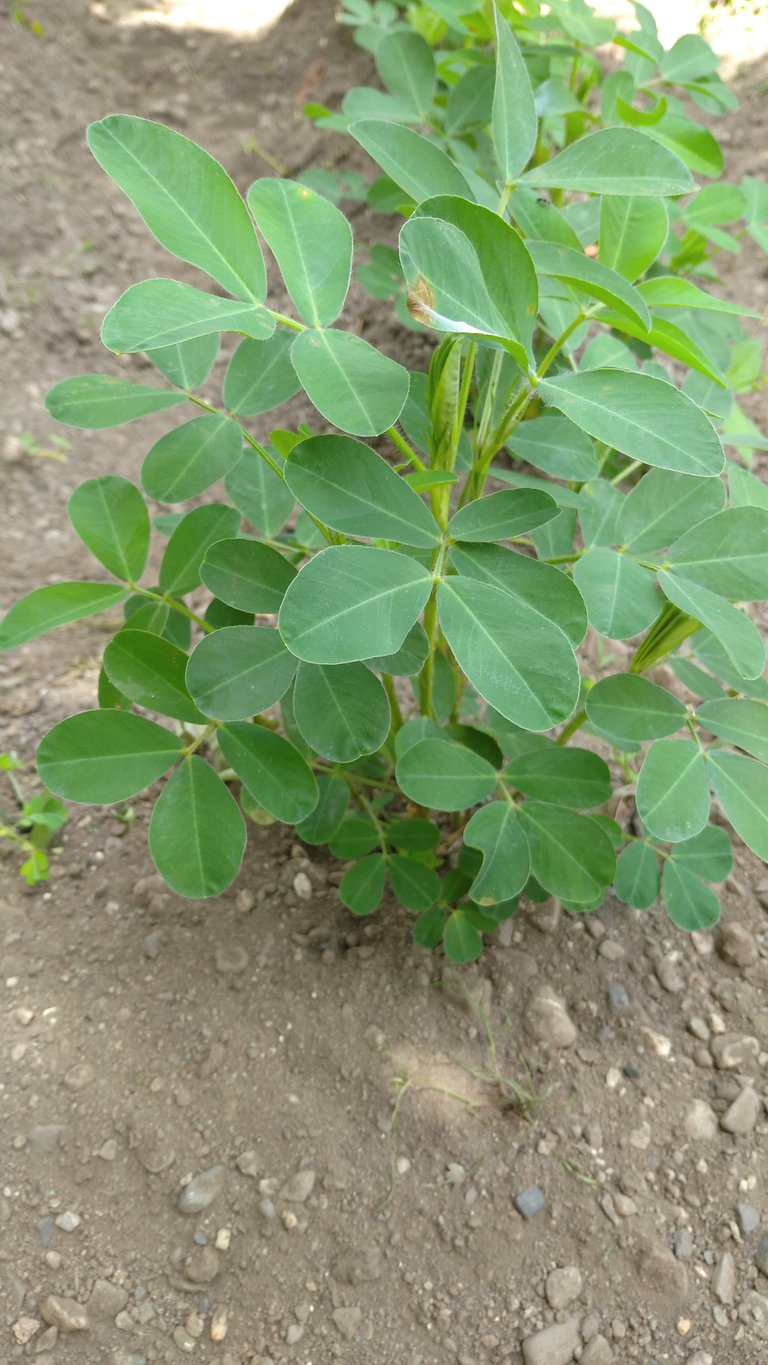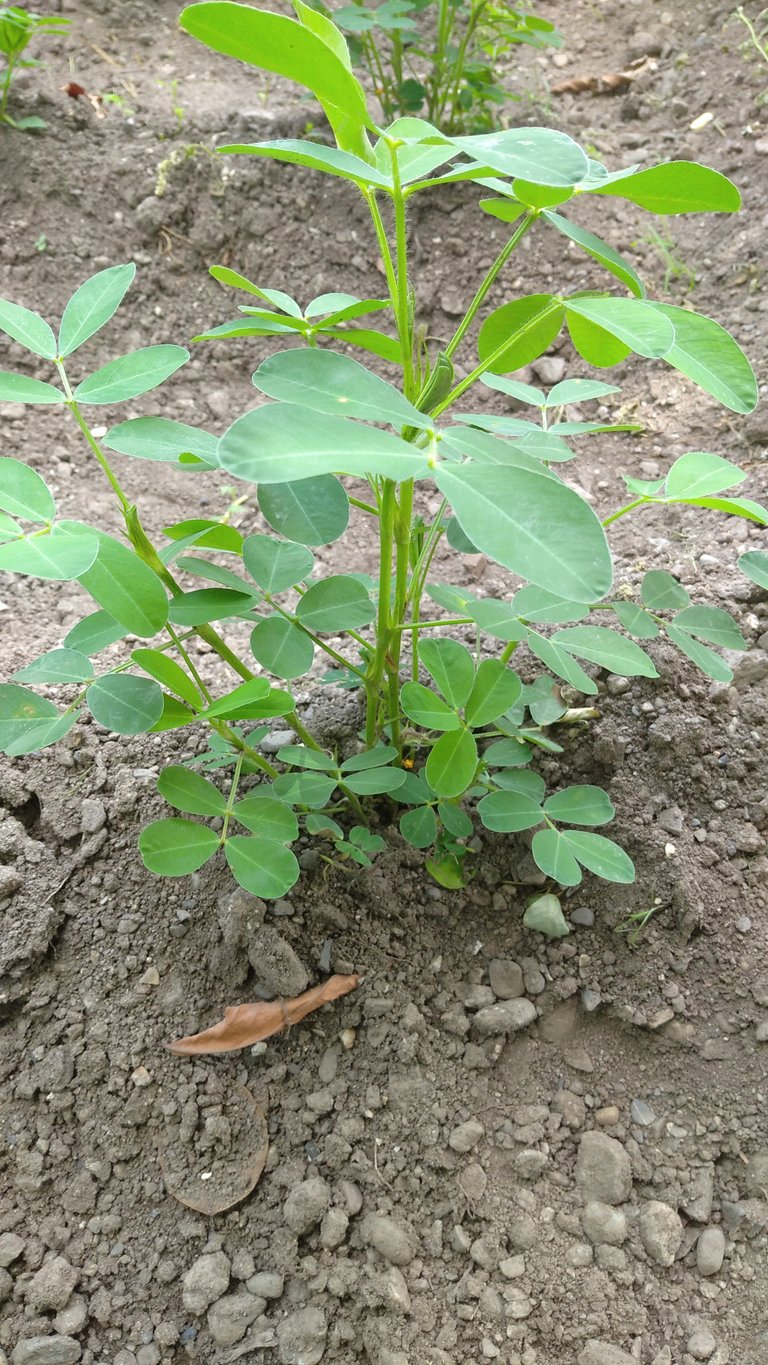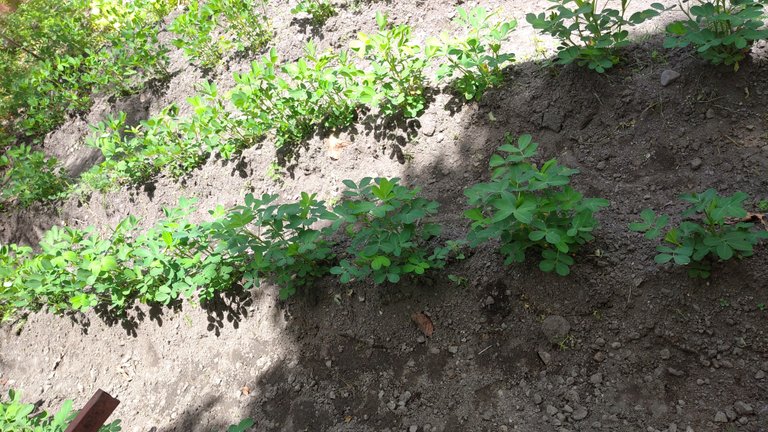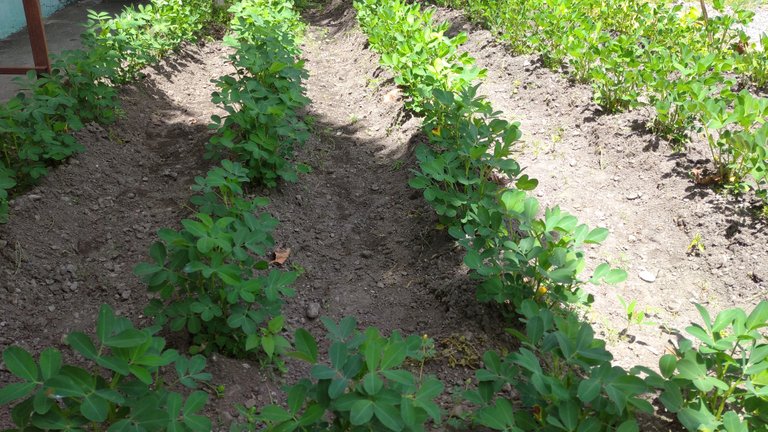You may see these peanut plants in the supermarket, grocery stores, or on the street with people selling etc.
But this is a small project that my sister's students do where she teaches primary school, she asked for my help since I have a little knowledge about plants and help her with that.
The peanut or peanut, whose scientific name of Arachis hypogaea is a plant that is part of the Fabaceae family, where we can see that its pods grow towards the ground.


It is very important to highlight in regard to how to plant peanuts, that this is preferably developed in places with drained soil, fertile and rich in organic matter and with good soil preparation.
When it comes to how to plant peanuts, it is important that flowering occurs during the dry season. The rainy season can negatively affect pollination in this case it is expected that as we are in the rainy season it will not affect it as much.
The irrigation that must be done flush in order to keep the soil moist, without causing waterlogging. When planting peanuts, it must be taken into account that the flowering period must be reduced or irrigation suspended so as not to harm pollination, as I said in that case, rain is the factor that is there to affect it.

Another factor that should be on the lookout is to eliminate weeds or garbage around it, since that reduces the amount of competition for nutrients.
An important step is to mound the soil around the plants before flowering begins, to facilitate the arrival of the flower ovary to the ground, and
the harvest of the pods begins from 100 days to 6 months after the start of the peanut planting, on the other hand it is necessary to take into account it is when the harvest is near since to be attentive to the leaves of the plant when they have a yellowish color, there where the pods should be taken, which is the seed, and note that it is dark where that is the indicator that they are ripe and ready for harvest.
The peanut planting that my sister's students planted was behind their facilities in a productive patio that they have there and thus they take advantage of it to plant their desired crops, the peanut seed used in their small peanut project they had to buy already sealed which is the most recommended, and so they agreed to plant it.
They already had the land in good condition, clean and prepared for planting, where they made several small furrows to start planting, these furrows are not that far away either, each furrow is about twenty to thirty cm apart and a length of 10 meters, after these furrows they began to plant peanuts, where today they already have the results obtained from their planted peanuts, they are already at an adequate size in the process of growth, hoping later the rain will not affect their growth so much, It is impressive that in this area it is uncommon to see peanuts planted due to the climate, but there the planting goes little by little with growth formation and its shiny leaves waiting for a good harvest.


It is very important to get involved in this type of activity since you learn something different every day and expand your knowledge, the reason why I love being active with plants is that since I studied Tsu in agri-food technology, I like to know all the plants and crops necessary. and teach others to learn too.
This has been for today hoping you have liked this process and that you have a little information about what one learns every day.
Thank you very much until the next .
Versión Español
Aprendiendo sobre la siembra de maní.
Estás plantas de maní quizás la ves en en el súper mercado , abastos , oh en la calle con personas vendiendo etc.
Pero este es un proyecto de pequeños que hacen los alumnos de mi hermana dónde ella da clases primaria , pidió de mi ayuda ya que tengo un poco de conocimiento sobre plantas y ayudarla en eso.
Ell maní o cacahuate, cuyo nombre científico de Arachis hypogaea es una planta que forma parte de la familia de las Fabaceae, dónde podemos apreciar que sus vainas crecen en dirección al suelo.


Es muy importante resaltar en lo que se refiere a como sembrar el maní, que esta se desarrolla preferentemente en lugares con suelo drenado, fértil y rico en materia orgánica y con su buena preparación de tierra.
En lo que se refiere a cómo sembrar maní, es importante que la floración se produzca durante la temporada seca. El periodo de lluvias puede afectar negativamente la polinización en este caso se espera que como estamos en periodo de lluvia no lo afecte tanto.
El riego que debe hacerse al ras con el fin de mantener el suelo húmedo, sin causar un encharcamiento. Al sembrar el maní hay que tener en cuenta que el periodo de floración se debe reducir o suspender el riego para así no perjudicar la polinización cómo dije en ese caso la lluvia es el factor que está allí en afectar.

Otro factor que se debe estar al pendiente es eliminar las malas hierbas oh basura a su alrededor ya que eso le disminuye en que poco compita por nutrientes.
Un paso importante es amontonar la tierra alrededor de las plantas antes de empezada la floración, para facilitar la llegada al suelo del ovario de la flor, y
la cosecha de las vainas se inicia desde los 100 días hasta los 6 meses después de iniciada la siembra del maní, por otra parte hay que tener en cuenta es cuando se a cerca la cosecha ya que estar atento a las hojas de la planta cuando tengan un color amarillento , allí en dónde se debe tomar las vainas que es la semilla , y notar que sea oscura dónde ese es el indicador que están maduros y listo para la cosecha.
La siembra del maní que sembraron los alumnos de mi hermana fue detrás de sus instalaciones en un patio productivo que ellos tienen allí y así aprovechan para sembrar sus cultivos deseados, la semilla de maní utilizadas en su pequeños proyecto de maní la tuvieron que comprar sellada ya que es lo más recomendada, y así accedieron para su siembra .
Ya tenían el terreno en buen estado limpio y preparado para la siembra dónde hicieron varios surcos pequeño para la empezar la siembra , estos surcos tampoco están tan retirados, cada surcos está como a veinte cm a treinta cm de retirado y una largura de 10 metros , después de estos surcos ellos empezaron a la siembra del maní , dónde ya hoy en día tienen los resultados obtenidos de su maní sembrado ya están a un tamaño adecuado en proceso de crecimiento , esperando más adelante la lluvia no lo afecte tanto en su crecimiento, al impresionante es que en esta zona es poco común ver siembra de maní dado a el clima pero allí va la siembra poco a poco con formación de crecimiento y sus hojas que están brillantes esperando a qué se de una buena cosecha .


Es muy importante involucrarse en este tipo de actividades ya que aprendes cada di algo distinto y amplias tu conocimiento, la razón por el cual me encanta estar activo con las plantas es que como estudie Tsu en tecnología agroalimentaria, me gusta conocer todas plantas y cultivos necesario y enseñar a otros para que aprendan también.
Esto ha sido por hoy esperando le hayas gustado este proceso y que tengas un poco de información de lo que uno aprende cada día .
Muchas gracias hasta la próxima .

